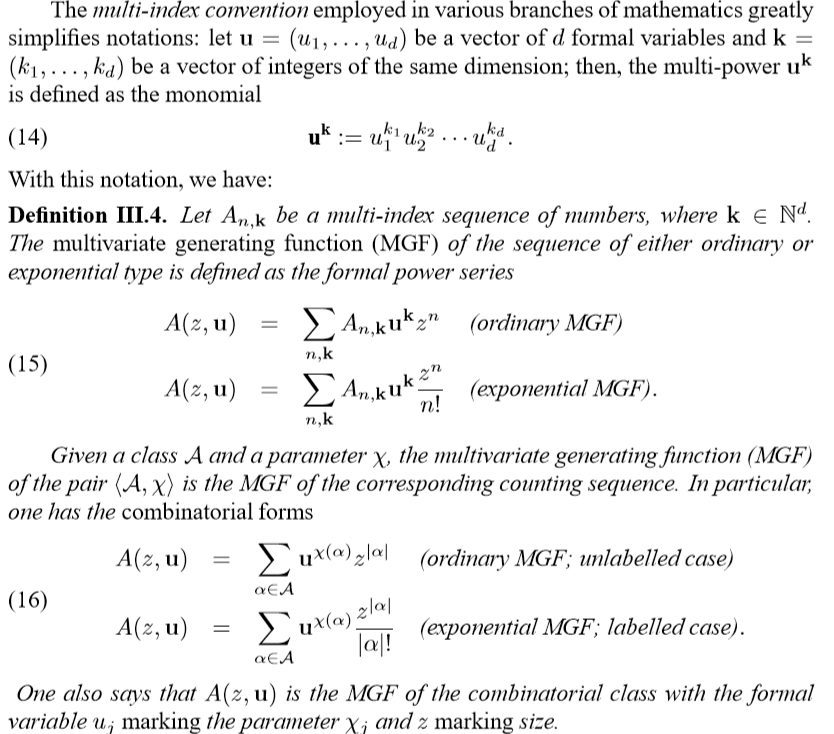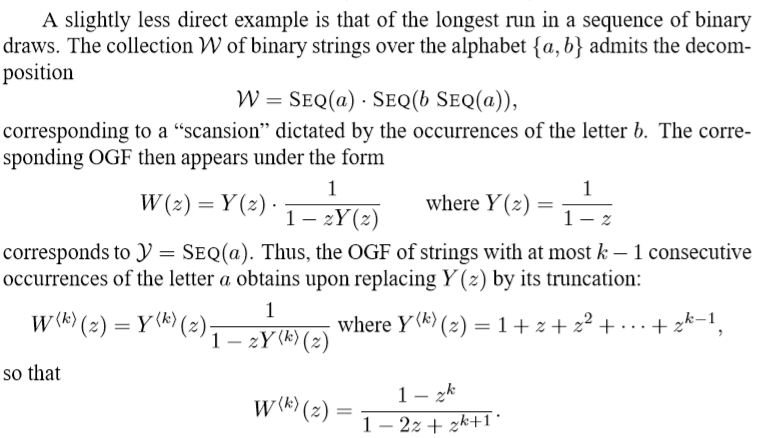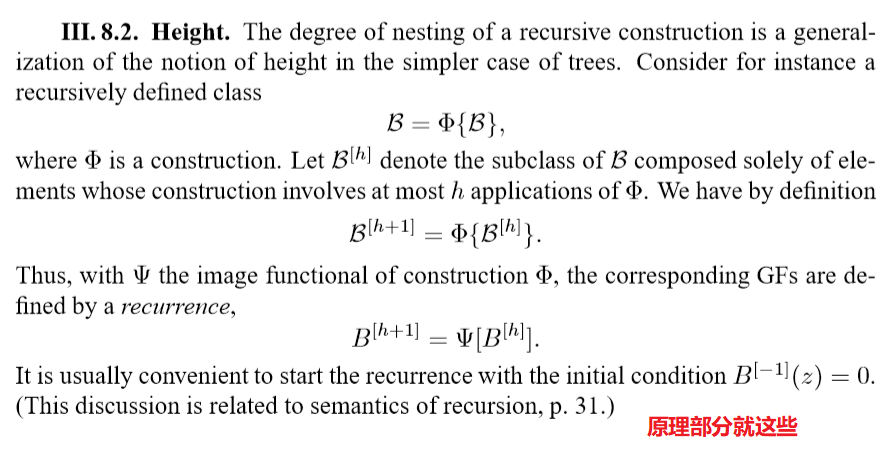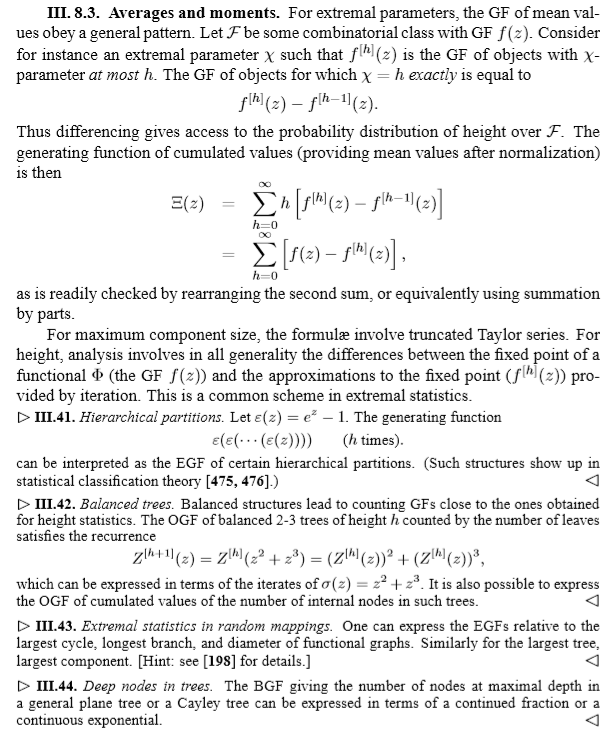MGF multivariate generating function 多变量生成函数
multivariate generating function MGF 多变量生成函数
MGF多变量生成函数multivariate generating function
定义

比如,以前可能让你计数有\(k-1\)个逆序对的n-排列个数\(A(n,k)\)
现在让你计数
指定了n-排列圆分解后各个长度\(j\)的cycles的个数\(\chi_j\),让你计数
或者,指定了各字符出现频数的长n的字符串个数

例子
the exponential MGF of permutation with \(u_1,u_2\) marking the number of 1-cycles and 2-cycles to be
可以想象其实还有其他的\(u_j\),这些\(u_j\)都取1了
写完整了,就是
这正好是【The cycle index polynomials of the symmetric groups】
如果取$u_1=u_2=1 $ , 对应的是计数所有的n-排列个数的EGF
对应的计数是\(n!\)
如果\(u_1=0,u_2=1\),给出derangement(错排;长度为1的cycles的个数为0)的EGF
对应的计数是\((n!)(\frac{1}{2!}-\frac{1}{3!}...+(-1)^{n}\frac{1}{(n)!})\)
如果\(u_1=u_2=0\) ,给出所有的cycles长度都大于2的n-排列个数的EGF
对应的计数是$
a(n) = \sum_{i=3..n} \binom{n-1}{i-1}\cdot (i-1)! \cdot a(n-i).a(0)=1,a(1)=0,a(2)=0$ https://oeis.org/A038205
如果置\(u_1=u,u_2=1\),给出有k个singleton cycles(k个位置正好不变)的n-排列的EBGF
对应的计数是 \(\tbinom{n}{k}(n-k)!(\frac{1}{2!}-\frac{1}{3!}...+(-1)^{n-k}\frac{1}{(n-k)!})\)
Extremal parameters
现在要研究这样的问题:
比如:
一个例子是the largest component in a combinatorial structure (for instance, the largest cycle of a permutation) ,指定了排列的长度\(n\)和最大的cycle长度\(k\),让你计数
另一个例子是 the maximum degree of nesting of constructions in a recursive structure (typically, the height of a tree). 制定了树的节点数\(n\)和树的的高度\(h\),让你计数
面对这样的问题,(传统的)BGF无能为力。
III.8.1 largest components

例子1 decomposition of permutations
the cycle decomposition of permutations translated by
使用truncation后,得到the EGF of permutations with longest cycle≤ b
by the way,the EGF of permutations with smallest cycle of size > b
例子2 words over an m–ary alphabet
the EGF of words over an m–ary alphabet
使用truncation后,得到the EGF of words such that each letter occurs at most b times
例子3 set partitions
the EGF of set partitions
the EGF of set partitions with largest block of size at most b
例子4 the longest run in a sequence of binary draws

\(\mathcal{W}=\operatorname{SEQ}(a) \cdot \operatorname{SEQ}(b \operatorname{SEQ}(a))\)这么写有点正则的感觉,比如aabbbaabaa分解过来就是 aa|b|b|baa|baa
III.8.2 Height

例子1 plane trees
general plane trees定义是这样的
定义一个树的高度是最长的分支(branch)的边的个数,那么the set of trees of height\(\leq h\) 满足如下的递归关系
对应的OGF满足
展开得到(别问连分数怎么打的,问就是\frac套\frac)
例子2 plane binary trees
平面二叉树定义如下
递归关系是
得到
例子3 Cayley trees
CayleyTree词条 所有非叶子节点的度都为\(n\)的树叫n-CayleyTree
Cayley树定义方程
有界高度的CayleyTrees的EGF的递归关系
得到\(T^{[h]}(z)\)的"连指数“形式
III 8.3 Averages and moments
没看懂

资料来自网络
书用的是Analytic Combinatorics by Philippe Flajolet, Robert Sedgewick



